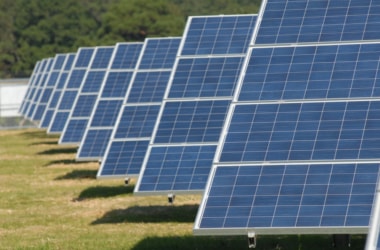
Ministry of New & Renewable Energy (MNRE) has issued the Guidelines for Tariff Based Competitive Bidding Process for Procurement of Power from Grid Connected Solar PV Power Projects.
The Government has notified these Guidelines on 3rd August, 2017.
These Guidelines have been issued under the provisions of Section 63 of the Electricity Act, 2003 for long term procurement of electricity by the ‘Procurers’ [the distribution licensees, or the Authorized Representative(s), or an Intermediary Procurer] from grid-connected Solar PV Power Projects (‘Projects’), having size of 5 MW and above, through competitive bidding.
Key Reform Initiatives as per these Guidelines are as follows:i. Generation Compensation for off take constraints thereby reducing off take risks: The
“Must-run” status for solar projects has been stressed upon.
Generation Compensation provided for following off-take constraints:a) Back-down - Min. Compensation 50% of PPA Tariff
b)Grid unavailability - Compensation by way of Procurement of Excess Generation / Outright Compensation
ii. PPA: To ensure lower tariffs, Minimum PPA tenure has been kept at 25 years. Unilateral termination or amendment of PPA is not allowed.
iii. Project preparedness to expedite and facilitate setting up of projects: Issues related to land, connectivity, clearances etc. and the extension in case of delay, have been streamlined.
iv. Event of Default and the consequences thereof clearly defined to ensure optimal risk sharing between Developer and Procurer. This has been done by clearly defining the generator and procurer events of default, and describing the consequences thereof.
v.Termination Compensation to increase bankability of projects by securing the investment by the Generator and the lenders against any arbitrary termination of PPA. Quantum and modality for termination compensation in case of both generator default and procurer default has been clearly defined.
vi. Payment Security Mechanism: Risk of generator’s revenue getting blocked due to delayed payment / non- payment by the procurers has been addressed through provision of Payment Security Mechanism through instruments like Letter of Credit (LC), Payment Security Fund, State Guarantee, etc.
vii. Change in Law provision to provide clarity and certainty to generators, procurers, and investors/lenders - Change in Law provision, effective from the date of bid submission and covering any change in law/Tax rate which has a direct effect on the Project (and not just taxes made applicable for supply of power) has been provided.
viii. Early Commissioning & Part-Commissioning for expeditious completion of projects - Early commissioning and part commissioning have not only been allowed, but incentivised, by way of allowing the PPA for a minimum 25 years from the Scheduled Commissioning Date.
ix. Rationalisation of Penalties: The penalties have been rationalised, so as to reduce the overall cost to the Generator, while at the same time, ensuring compliance with the Commissioning Schedule/Scheme Guidelines
x. Re powering: Generators are free to re power their power plants. However, the procurer will be obliged to buy power only within the CUF range in PPA.
xi. Bid structure and process: Bids have been allowed in both Power (MW) and Energy (kWh) terms. Also, e-bidding has been emphasised to improve transparency.